In the middle of my photography session a workman on a motorbike came along and spied me in my box! I think he was quite surprised. He had come to ask me to move my car, as they were earth-moving nearby and he was afraid they might get dirt on it. He was very apologetic and even asked me if they were disturbing me! I've never met such polite construction workers!
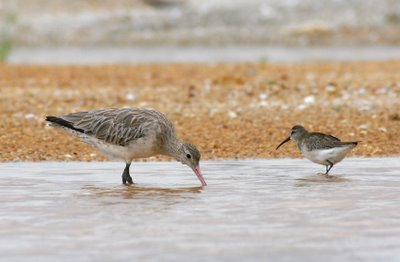
An adult Bar-tailed Godwit. Compare the rather plain-toned scapulars and wing coverts with the next pic of a juvenile.
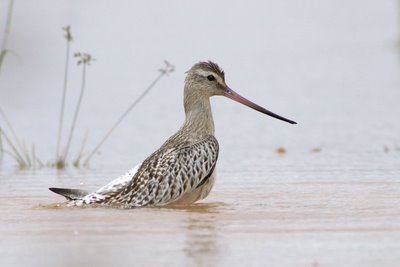
The juvenile has beautiful pale fringes and notches on the coverts and scapulars, and a much more marked supercilium than the adult. It almost looks like a different species!
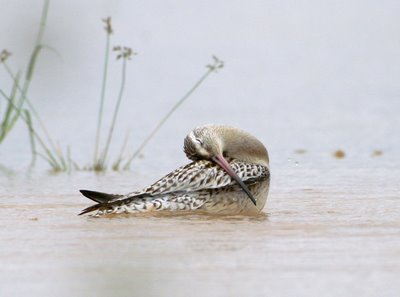
A Godwit does Swan Lake! I couldn't resist posting a few more of pics of this graceful bird as it gave itself a thorough wash.
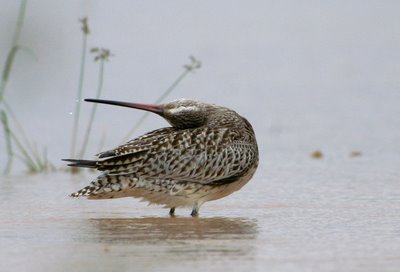
Another entrancing balletic movement.
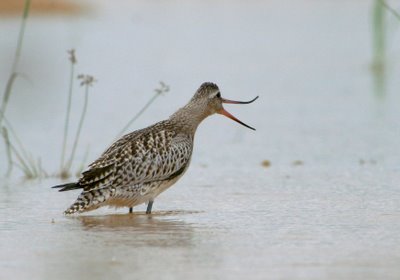
Sandpiper and godwit bills are flexible (useful when catching prey in the mud!), and this godwit is having a good bill-stretch to round off his ablutions!
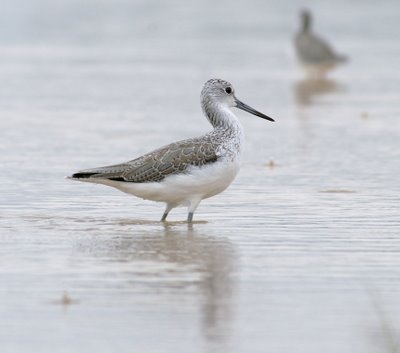
This adult non-breeding plumaged Greenshank spent much of the time busily feeding.

To me Greenshanks are the embodiment of grace!
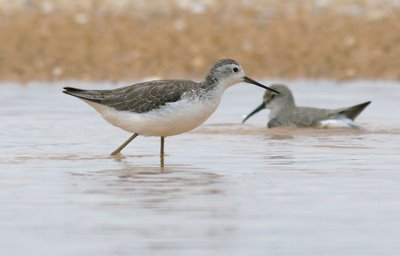
An adult Marsh Sandpiper for comparison. The tertials are old breeding plumage feathers (note the squiggly marks on them).

This one is in full non-breeding plumage.

Terek Sandpipers are quite chunky in comparison to Greenshanks and Marsh Sandpipers. On the mud, they are crab specialists, dashing around on their short legs to seize their prey in their long upturned bills. This is about the closest I've managed to get to one.
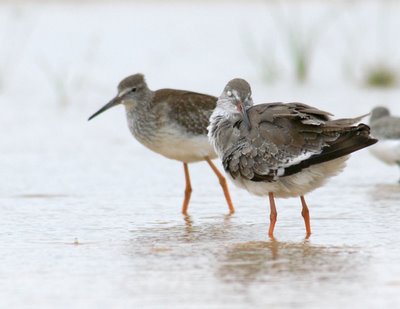
An adult Redshank preening its scapulars. In the background is a juvenile, with its distinctively notched coverts and streaked breast.

Here's a better view of the juvenile.

A Curlew Sandpiper in juvenile plumage with its distinctive blackish, anchor-patterned scapulars.

The adults are much plainer, greyer birds in their non-breeding dress.
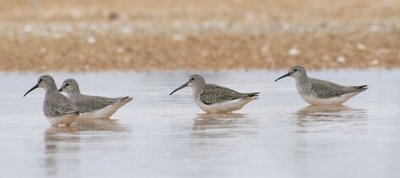
Three adult and a first winter Curlew Sandpiper. The 1st winter bird is second from the right. It still has some juvenile-patterned scapulars, and it will retain its juvenile wing coverts till next spring.

A Whimbrel walks warily past my hide, before deciding that the mudflats are a safer place to be!
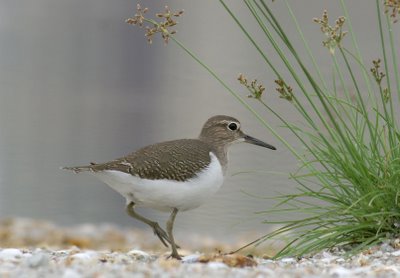
A Common Sandpiper at close range.

The joys of taking a bath! This Lesser Sand Plover relaxes and tries to cough up a pellet.
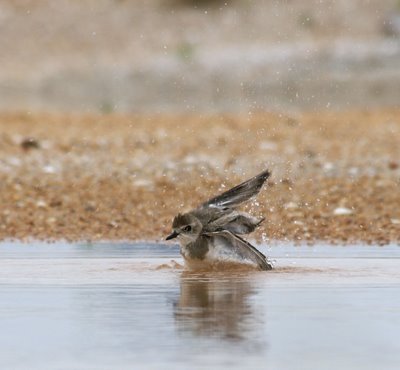
Having a splashing good time! Keeping feathers in optimum condition is vital for these migrants. If feathers are matted or in poor condition, their ability to insulate is impaired and birds would quickly die of cold.
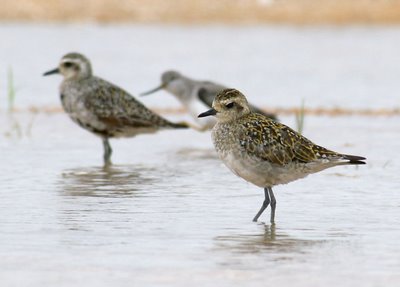
A non-breeding Pacific Golden Plover walks in front of one in transitional plumage.

Another view of this bird, showing a pale-washed breastband and very yellowy-notched scapulars. Initially I thought this was a juvenile, but now I think it's probably a non-breeding adult.

And finally ... a male Yellow Wagtail comes to check me out!
No comments:
Post a Comment